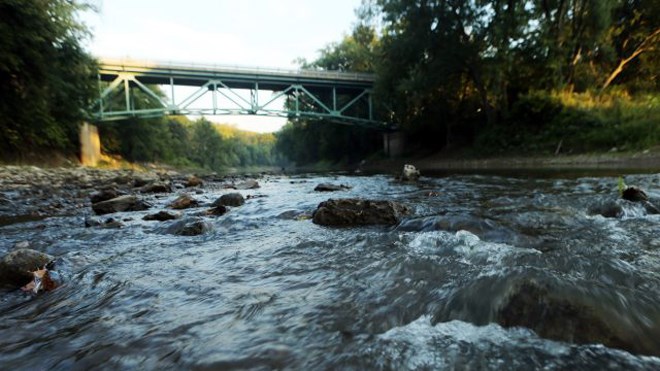The National Energy Board has granted Ontario Rivers Alliance (ORA) intervenor status in panel hearings looking into the Energy East Pipeline application.
In a news release, ORA chairperson Linda Heron of Worthington said the announcement indicates how much progress the volunteer organization has made since it was formed to protect, conserve and restore healthy river ecosystems.
"Like many other Canadians, our members have serious concerns about the potential for spills and leaks in an ageing pipeline that was designed to transport natural gas and would now be converted to move diluted bitumen," said Heron.
"Our research indicates that Energy East uses insufficient leak detection technology to effectively monitor the pipeline's integrity, and that any single spill could cause irreparable damage to one or more of over two thousand water bodies along the pipeline route."
Heron said that the leak detection system (LDS) can detect spills of over 1.5 per cent of full flow, which will allow them to shut down within 10 minutes of a suspected leak.
“This doesn’t sound bad until you do the math -- 1.5 per cent per cent of full flow on a 42-inch pipeline would release 2,000 square meters per day, or enough to fill 16 railway tanker cars,” she said.
“Any spills under 1.5 per cent cannot be detected by the LDS, and could go on for days. A review of the data indicates that leaks are usually reported by passersby – not the LDS."
ORA will hire experts to undertake a review and analysis of pipeline integrity, including its proposed close proximity to a natural gas line, the environmental and socio-economic impacts of pipeline ruptures, including historic data regarding spill causes, response times, and the effectiveness of cleanup measures, the release said. A comprehensive list of Ontario waterbody crossings will also be developed.
ORA is one of 337 applicants granted intervenor status by the National Energy Board, which received more than 2,600 applications to participate in the Energy East hearings.
The ORA was founded in 2011, prompted by four proposed “Modified Run-of-River” waterpower proposals that were slated for the Vermilion River, in the District of Greater Sudbury.
“The challenges and frustrations experienced while trying to engage the proponent to answer questions and provide information in a proponent led process was the impetus for reaching out to other organizations dealing with these same issues on many other rivers across the province,” the group says on its website.
“It was very clear that this lack of public engagement and lack of cooperation were a common thread running throughout most of the proposed dam projects.”
More information about the Energy East hearing process is available on the ORA website blog: www.OntarioRiversAlliance.ca
ORA is a Not-for-Profit grassroots organization acting as a voice for several stewardships, associations, and private and First Nation citizens who have come together to protect, conserve and restore healthy river ecosystems.
